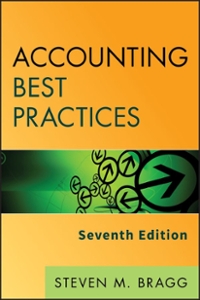Problem 5-33 Effect of different inventory cost flow methods on financial statements The accounting records of Clear Photography, Inc., reflected the following balances as of January 1, 2012: Cash $18,000 Beginning inventory 13,500 (150 units @ $90) Common stock 15,000 Retained earnings 16,500 The following five transactions occurred in 2012: 1. First purchase (cash) 120 units @ $92 2. Second purchase (cash) 200 units @ $100 3. Sales (all cash) 300 units @ $185 4. Paid $15,000 cash for operating expenses. 5. Paid cash for income tax at the rate of 40 percent of income before taxes. Required a. Compute the cost of goods sold and ending inventory, assuming (1) FIFO cost flow, (2) LIFO cost flow, and (3) weighted-average cost flow.
Problem 5-33 (part a) COGS: FIFO (First In First Out) - the cost of inventory sold is considered to be in the order of purchase, first units purchased to be the first units sold, the next units purchased are considered considered to be the next units sold, etc. Work the problem EXACTLY like the example on page 181. COGS: LIFO (Last In First Out) - the cost of inventory sold is considered to be in reverse of the order of purchase, last units purchased to be the first units sold, the second to last units purchased are considered to be the next units sold, etc. Work the problem EXACTLY like the problem EXACTLY like the example on page 181. Weighted Average: Add up all purchases up to the sale date to find the Cost of Goods Available for Sale, then divide by the total number of units purchased. This will give you the cost per unit to use in your calculations. Work the problem EXACTLY like the example on page 181. Ending Inventory = Cost of Goods Available for Sale - COGS Problem 6-25 a) STRAIGHT-LINE: Cost + Delivery Cost - Salvage Value = Depreciable Cost Depreciable Cost / number of years = yearly depreciation expense Work the problem EXACTLY like the example on page 223-224. b) UNITS-OF-PRODUCTION: (Cost - Salvage Value) / Estimated units of production = depreciation cost per unit Work the problem EXACTLY like the example on page 223-224. c) DOUBLE-DECLINING BALANCE: (Cost - Accumulated depreciation at beg of year) x (2 x Straight-line rate) = annual depreciation. Work the problem EXACTLY like the example on page 223-224. Problem 5-33 Clear Photography, Inc. Goods Available for Sale Beginning Inventory 150 @ $90 = $13,500 First Purchase 120 Second Purchase 200 @ 92 = 11,040 @ 100 = 20,000 Total 470 $44,540 Cost per Unit Units FIFO COGS Cost of Goods Sold From Beginning Inventory @ = From First Purchase @ = From Second Purchase @ = Total Cost per FIFO Ending Inventory From Second Purchase LIFO COGS From Second Purchase Unit Units @ Units Ending Inventory = Cost per Unit Cost of Goods Sold = @ From First Purchase @ = Total LIFO Ending Inventory Cost per Unit Units Ending Inventory From Beginning Inventory @ = From First Purchase @ = Total Ending Inventory Weighted Average Computation Total Cost ? Weighted Average Total Units = Cost per Unit ? = ? Cost per Unit Units Cost of Goods Sold: @ = Ending Inventory: @ = Problem 6-25 Remember: use Excel formulas when applicable a. Straight-line Cost + Delivery Cost - Salvage Value = Depreciable Cost Cost plus: delivery cost Total cost Less: salvage value Depreciable cost ? ? ? ? ? Estimated life: 4 years Depreciable Cost per year = Annual Depreciation 2012 Depreciation 2013 Depreciation b. Units-of-Production First, find cost per unit Cost plus: delivery cost Total cost Less: salvage value Depreciable cost (Cost - Salvage Value) / Estimated units of production = depreciation cost per unit ? ? ? ? ? Number of units = 800,000 Cost per Unit = Current Units of Production Cost per unit Annual Depreciation 2012 Depreciation X = 2013 Depreciation X = c. Double-Declining Balance (Cost - Accumulated depreciation at beg of year) x (2 x Straight-line rate) = annual depreciation. First, find the applicable cost (note: salvage value is not considered in the calculations) Cost ? plus: delivery cost ? Depreciable cost ? Straight-line rate = Double SL rate = ? ? Accum deprec at beg of period) (Cost Double SL Rate Annual Depreciation 2012 Depreciation - X = 2013 Depreciation - X =







